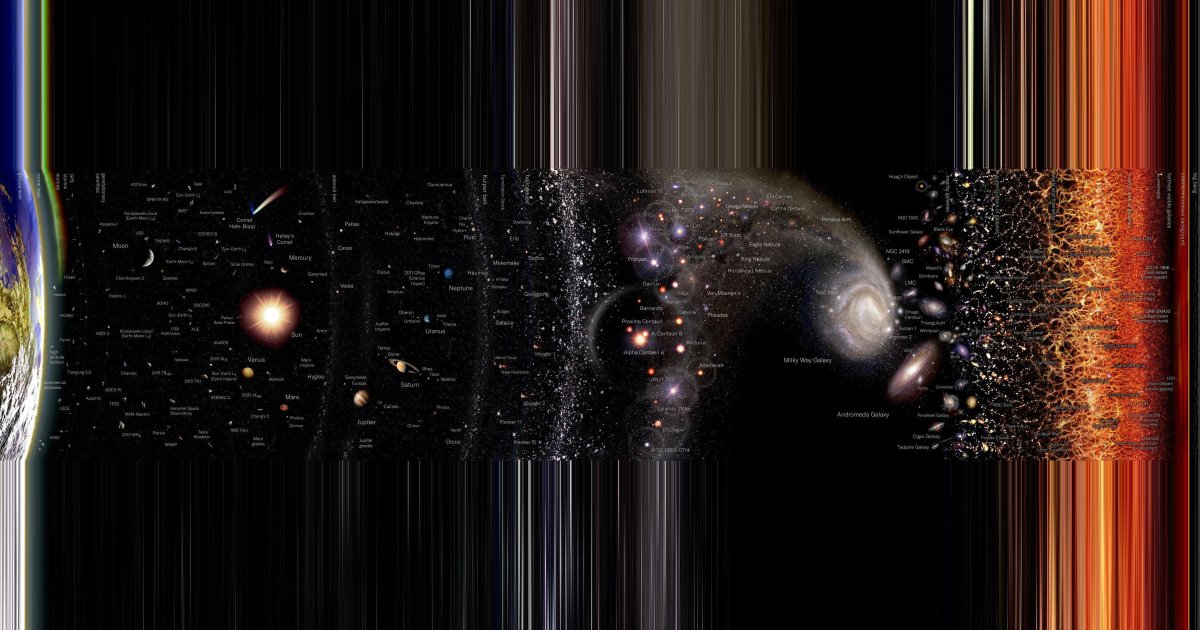
"We typically think linearly: where the Sun is ~10,000 times farther away than Earth's diameter. But cosmically, logarithmic scales - where each multiplicative factor of "10" defines our cosmic ruler's next mark - serve us far better. On a logarithmic scale, the Sun, Mercury, and Mars are practically equidistant. Another factor of ~10,000 in distance takes us to the Oort cloud. A short logarithmic jump takes us from the Solar System to the stars."
"Rapidly, neighboring galaxies become ubiquitous. Subsequent cosmic steps reveal large-scale galaxy clustering. Eventually the largest structures of all are revealed: the great cosmic web. Many of these features are only apparent: dark energy will tear these pseudostructures apart. At the cosmic limits, the edges of time are revealed: the earliest moments after the hot Big Bang."
Earth's diameter is 12,742 km (7,917 miles), tiny compared to cosmic distances. Linear intuition makes the Sun seem ~10,000 times farther than Earth's diameter, but logarithmic scales with multiplicative factors of 10 better represent cosmic distances. On a logarithmic scale, inner planets and the Sun appear close; a further factor of ~10,000 reaches the Oort cloud. Small logarithmic jumps move from the Solar System to nearby stars, most bright stars lying within ~1,000 light‑years. Additional steps reach spiral arms, the Local Group, abundant neighboring galaxies, and large‑scale galaxy clustering, culminating in the cosmic web. Dark energy will disperse many of these structures, and the cosmic edge reaches the earliest post–Big Bang moments.
Read at Big Think
Unable to calculate read time
Collection
[
|
...
]